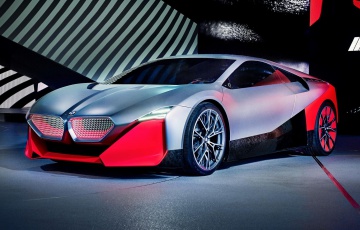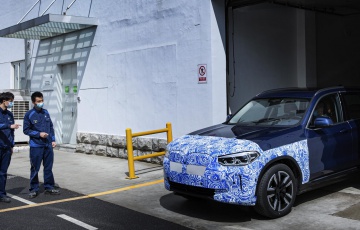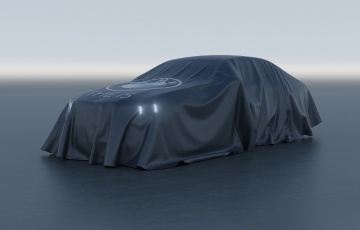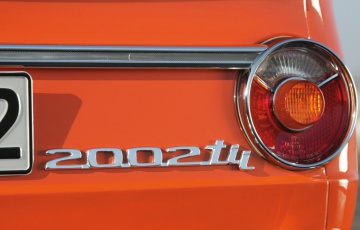First drive: BMW M4 MotoGP Safety Car
Turbo super-coupe shows off M Division's water-injection technology. Kyle Fortune explains
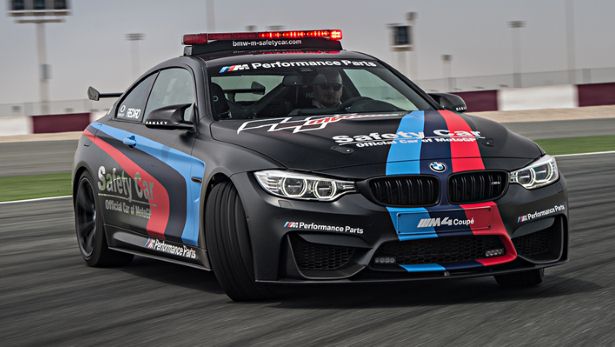
What's this, then?
This lights-and-stickers BMW M4 is the vehicle tasked with policing MotoGP's unhinged biking talent when someone's had an off. So it has to be a bit quick and tasty, given the speeds of which the two-wheeled loons are capable.
BMW's M Division hasn't taken any chances with this M4 then, equipping it not just with brakes, a roll cage, Recaro bucket seats with six-point harnesses and KW coil-over suspension, but an experimental water-injected version of its turbocharged six-cylinder engine.
Water-injected?
H2O and combustion might be uncomfortable bedfellows, water's inability to compress meaning it'll grenade an engine if it gets inside. So here BMW M uses water in the turbo system, cooling the charge air, which in turn allows the engine to run at greater compression, and those turbos to run higher boost. It's all to the benefit of not just performance, but economy and emissions, too.
Sounds pretty simple. Why's nobody done it before?
It was tried once in racing but quickly banned: BMW M's boss Frank Van Meel saying he's astonished that it's not been used since. It's so new that Meel's not actually able to say how much more power it's producing.
Officially, BMW is tentatively saying an eight per cent increase on the stock M4's engine, which would put it at around 467bhp. But Van Meel says a bhp figure starting with a '5' isn't entirely unreasonable, and that the engine would easily manage that - particularly as thermal loads are less.
What's the catch?
None. Well, unless you're prone to driving your M4 at less than the 5,000rpm at which the system really starts working. It's got the people from BMW's i department interested, as well as those from the mainstream machinery. The benefits of water injection are potentially useful across the board, and increasingly significant as downsized engines all run turbos.
Anything else?
The power increases might be at the upper end of the M4's rev range, but the Safety Car actually feels more benign in its delivery than the stock M4, despite its greater potency. A couple of laps around the flat, wide - and thankfully huge run-off-area-equipped - Losail International Circuit in Qatar underlines that this feels like a very different M4.
Initially that's down to the way it steers, the wheel familiar in its weighting, but adding so much more immediacy and information, even on the glass-smooth tarmac of the circuit. The suspension has a lot to do with that. Add the grasping hold of those Recaro seats and their tight six-point harnesses, and the limits of BMW M4 Safety Car feel so much more approachable and readable, the engine's delivery less difficult too, even at lower revs.
And with the traction control off?
Switch off electronic intervention, and the Losail circuit is seen predominantly from either of the side windows, progress accompanied by a deal of tyre smoke and black line. That's not just in the bends, either...
Yet if Van Meel's talk of 500bhp is true, the M4 Safety Car is a rare machine in that it allows such grand power to be so easily deployed, and enjoyed.
It sounds magnificent too, thanks to what Van Meel describes as a BMW Performance Parts exhaust with the centre muffler removed.
When might we see water injection on the road?
Nobody's saying it, but the rumours are rife that the M4 Safety Car is effectively showcasing BMW's forthcoming track-focussed M4 GTS. If it is, then sign us up.
As for wider application for water injection, some more testing is needed, but it's essentially there. Van Meel admits an easier filling technique - the five-litre water tank is currently accessed through the boot floor - is required, with a refill likely required every thousand miles or so.
That of course depends on how it's driven. In the M4 Safety Car that means sideways, all the time.






